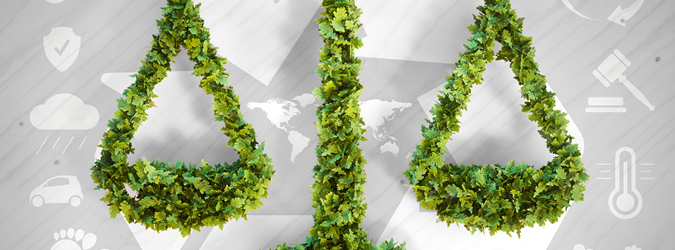How Environmental Regulators in NY Deal With Illegal Sharks and Other Transgressions
3.24.2023

A man kept seven illegal sharks in his above-ground swimming pool. He intended to sell them but didn’t have a license to do so. A search of his property revealed three other sharks — all dead.
The man pleaded guilty and was ordered to pay a $5,000 fine and sentenced to one year of probation. The surviving sharks now live at the New York Aquarium in Coney Island.
But how are such crimes investigated, and how do prosecutors charge such cases? This falls on the litigators in New York State who investigate and enforce laws protecting animals and natural resources. A recent Continuing Legal Education course, presented by the Environmental and Energy Law Section of the New York State Bar Association, detailed the process.
Investigating and Enforcing Environmental Crimes
The New York State Department of Environmental Conservation has its own police force, the Division of Law Enforcement.
“We’re a small agency, but we have a large heart,” said Captain Jesse Paluch. “And we have a lot of good morale and a lot of good ambition. We believe in what we do and we love what we do. That sets us apart.”
Paluch supervises the Bureau of Environmental Crimes Investigation unit, a 40-person division within the agency that investigates environmental crimes.
As criminal charges move forward, it’s up to the state to take up the case and figure out relevant charges, explained Hugh McLean, an assistant attorney general in the New York State Attorney General’s Criminal Enforcement and Financial Crimes Bureau.
Environmental law in New York is complicated. Unlike other states, which created their environmental regulations by copying language from federal law, New York took language from already existing state laws for agriculture, public health, and other relevant areas.
“The problem that was created by taking these different statutory provisions and simply reenacting them verbatim … was you lack that overall coherence and consistency,” McLean said. “The statues are written very differently and require a different approach in order to understand and implement properly.”
Prosecutors and judges are often unfamiliar with the specifics of the law and depend on experts such as McLean and Paluch to explain the law for environmental crimes.
The New York State Attorney General’s office prosecuted 10 to 15 environmental-related offenses over the past year.
Civil Environmental Law Enforcement
Antonia Pereira, regional attorney for New York State’s Department of Environmental Conversation Region 2, which covers New York City, spoke about the civil side of environmental law enforcement.
At times, the facts of a case don’t meet standards for criminal charges, so it is referred for civil enforcement.
In most cases, officials will look to reach an administrative settlement.
“It helps us avoid time-consuming administrative hearings as well as civil litigation, and gets respondents to compliance faster, which along with deterrence, is really one of the main goals in our enforcement,” Pereira said.
Violators can be ordered to pay fines and fund environmental projects that benefit the affected communities. Past projects have included planting community gardens, funding environmental educational, and planting trees.
“But to ensure that these projects are implemented properly and that the communities are properly engaged in the process, we often partner with nonprofit organizations to help us,” Pereira said.
This program was moderated by Karen Mintzer, the co-chair of the Enforcement and Compliance Committee of the Environmental and Energy Law Section. The CLE is available on demand.






